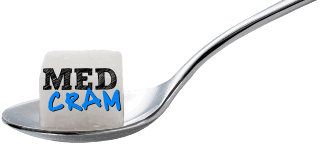Droplet vs Aerosol Transmission
In this video, Roger Seheult, MD of MedCram analyzes the effectiveness of masks on planes. The federal government has had a mask mandate for almost the past two years; however, this mask mandate was struck down by Judge Kathryn Kimball Mizelle on April 18, 2022. The decision to wear a mask on a plane is now left up to the individual. Dr. Seheult notes it is important to remember that Sars-CoV-2 is spread in two main ways. One is via droplet and the other via aerosol. Droplets are larger particles that are usually more than 5 micrometers in size. Aerosols on the other hand are smaller particles and usually less than 5 micrometers in size. The larger droplets typically can spread about 6 feet but aerosols can go much further due to their smaller size and ability to float in the air longer.
Airplane filtration systems
Dr. Seheult notes that masks are very good at mitigating droplet transmission and reviews how masks do this. However, masks are not as good at preventing viral transmission from aerosols. He notes that what is beneficial in decreasing this type of transmission is ventilation. Planes are known to have excellent ventilation and filtration of air. An entire airplane cabin can be turned over within 2 to 3 minutes. 50% of the air in a plane comes directly from the outside and the remainder of the air is put through HEPA filters.
Airplane virus transmission
It has been noted that throughout the pandemic there has been very minimal transmission of Sars-CoV-2 during air travel. Dr. Seheult reviews a study in Annals of Medicine regarding the transmission of COVID-19 and notes they found the risk per person transmission during a 13-hour flight was 0.56%. This was with everyone wearing masks and having HEPA filtration during the flight.
He also reviews an observational study regarding the transmission of SARS-CoV-2 on a 2-hour domestic flight in Japan that occurred before any mask mandates. This study is interesting as it provides some insight as to how transmission occurred on this flight in regards to people who were exposed and their seating distance to the index case (person who was infected) and whether a mask had been utilized. Dr. Seheult notes that these findings might be different as the variant evaluated at that time was the original variant and today’s variants have different infectivity and transmission rates compared to the original virus. The findings in this observational study showed 2 factors that decreased the risk of getting an infection from SARS-CoV-2 on an airplane. These included further distance from the index case and wearing a mask made it less likely to get infected. Per Dr. Seheult, this is a two-pronged approach with the mask helping with droplet transmission if a person is close to another infected individual and the plane’s HEPA filtration decreasing transmission via aerosolization of the virus. Ultimately, it is up to each individual to decide what is best for their personal health.
LINKS / REFERENCES:
Judge Kathryn Kimball Mizelle’s ruling striking down transportation mask mandate (CNN) | https://www.cnn.com/2022/04/19/politi…
Transmission of SARS-CoV-2 during air travel (Annals of Medicine) | https://www.ncbi.nlm.nih.gov/pmc/arti…
Federal Judge Strikes Down Mask Mandate for Planes (NYT) | https://www.nytimes.com/2022/04/18/us…
Transmission of SARS-CoV-2 during a 2-h domestic flight to Okinawa, Japan, March 2020 (ISIRV) | https://onlinelibrary.wiley.com/doi/f…
All coronavirus updates are at MedCram.com (including more discussion on new COVID variants, omicron variant, CDC, and more).
Stay Tuned for More COVID-19 Updates
Our COVID-19 videos are always available for free (and ad-free) at MedCram.com. In addition, check out our full library of courses and lectures on subjects ranging from Hypertension Explained Clearly to Sleep Apnea Explained Clearly Course and many more!
Meanwhile, you can find all of our COVID-19 videos compiled here.
